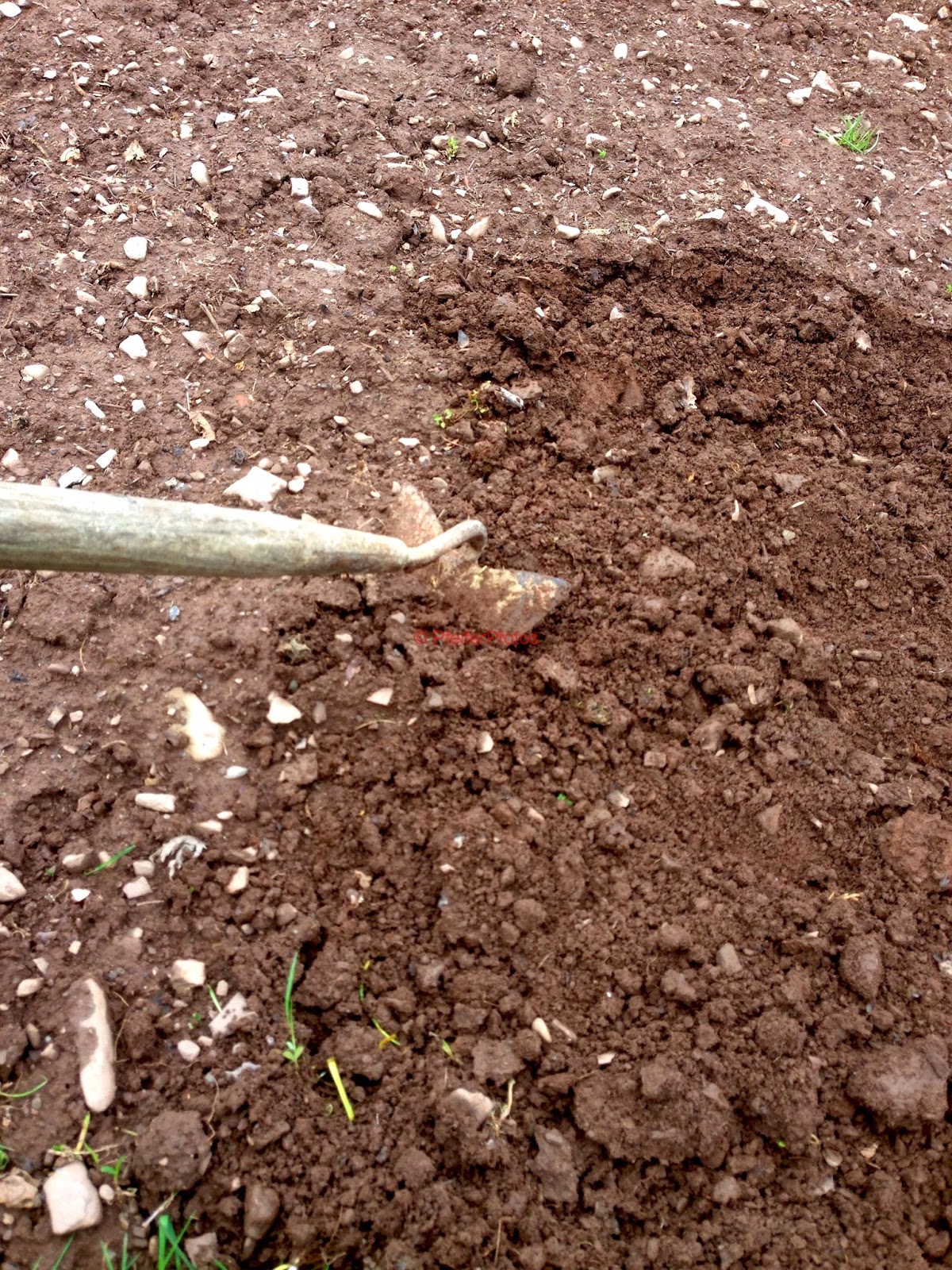Last weekend (May 3rd and 4th), I worked on planting some early season vegetables. When I refer to them as early season, I am referring to those vegetables that will do well when planted in early to mid May, when the weather can still be cool and wet.
My first step was to re-work the soil before planting. A couple of weeks had passed since I rototilled, therefore the soil had started to pack down a bit from the rain and sun.
I started with onions. First, I planted two rows of the yellow Stuttgart variety, which is a good general purpose onion that also stores exceptionally well over the winter, if kept under proper storage conditions. This onion is widely available as sets. The sets are planted in a shallow trench about an inch deep and covered with soil.
Next, I planted a row of red onions, which make a colorful and tasty addition to any salad.
Next, I transplanted some lettuce (Red Serpent Lettuce) that I started during the winter using the winter sowing technique, which I described in my post on February 4, 2014 (http://dansgardening.blogspot.com/2014/02/winter-sowing.html). Once the seeds sprouted, I placed the container in my greenhouse on the porch. The lettuce had grown quite nicely:
I divided the plants into 5 or 6 clusters and planted them:
You are probably noticing some other plants in addition to the lettuce. These are brussel sprout plants, which I am trying for the first time this year. During the winter my wife tried a recipe where she sliced them thinly, and sauteed them with balsamic vinegar. Needless to say they were delicious.
I surrounded the plants with wood shingles to protect them from wind and from any animals that may wander through. I have found wood shingles to be very useful in the garden. This I learned from from my Mom and Dad. They probably used them since years ago it was common for houses to have wood shingle roofs, and when the roofs were replaced with asphalt shingles, they saved the wood shingles. Of course it was the custom in those days not to be wasteful, therefore most things were saved an reused.
I especially try to protect lettuce and similar seeds when planted, since they are vulnerable to being washed away and/or interfered with by animals. I also use black fabric to cover the areas planted if heavy rain is forecast.
Next, I planted wide row of Swiss chard, spinach, radishes, and several more types of lettuce. I have found that making wide rows or patches about two feet wide and about a half inch deep works well for these types of plants.
I start by carefully raking and leveling the area, removing any large stones that might interfere with the sprouting seeds. These seeds are very small and fine, therefore I spend a little more time while planting these as opposed to larger seeds such as pumpkins and beans.
 |
| Swiss Chard Seeds |
 |
| Swiss Chard Seeds |
The Swiss chard I used is Fordhook, a well known heirloom variety, while the spinach was Riccio Gigante, a curly late variety. For the radishes, I blended packets of the Sparkler and Easter Egg varieties, And finally for the lettuce, I planted Summer Glory Blend (loose-leaf) and Salad Bowl Mix (mixed greens) from Park Seed. I also planted a small patch of romaine lettuce and the red serpent that I had planted using the winter sowing technique.
 |
| Planted Wide Rows |
Finally, some nice photos of a female cardinal that my son captured this week:
 |
| Female Northern Cardinal |
 |
| Female Northern Cardinal |
In my next post I will show how I transplanted.Spanish yellow onion and Lincoln leek plants that I started from seed
Until next time.









No comments:
Post a Comment